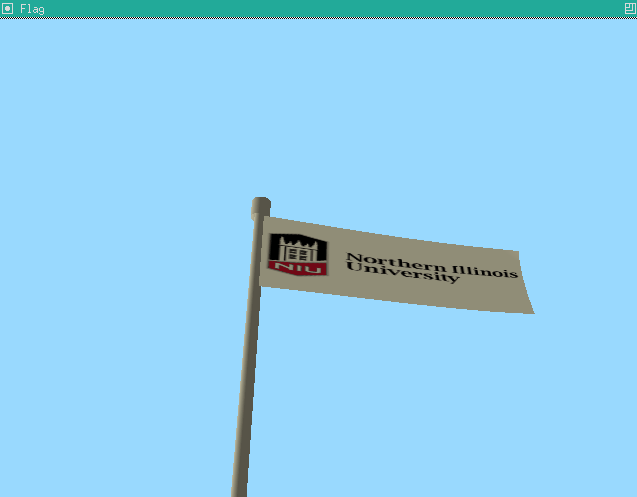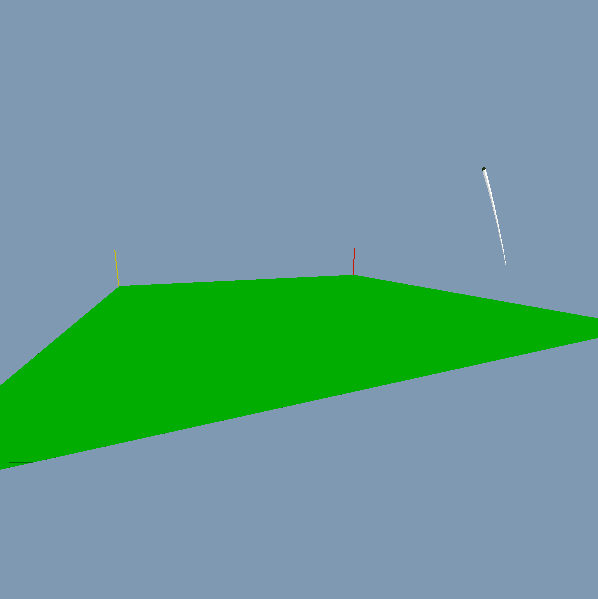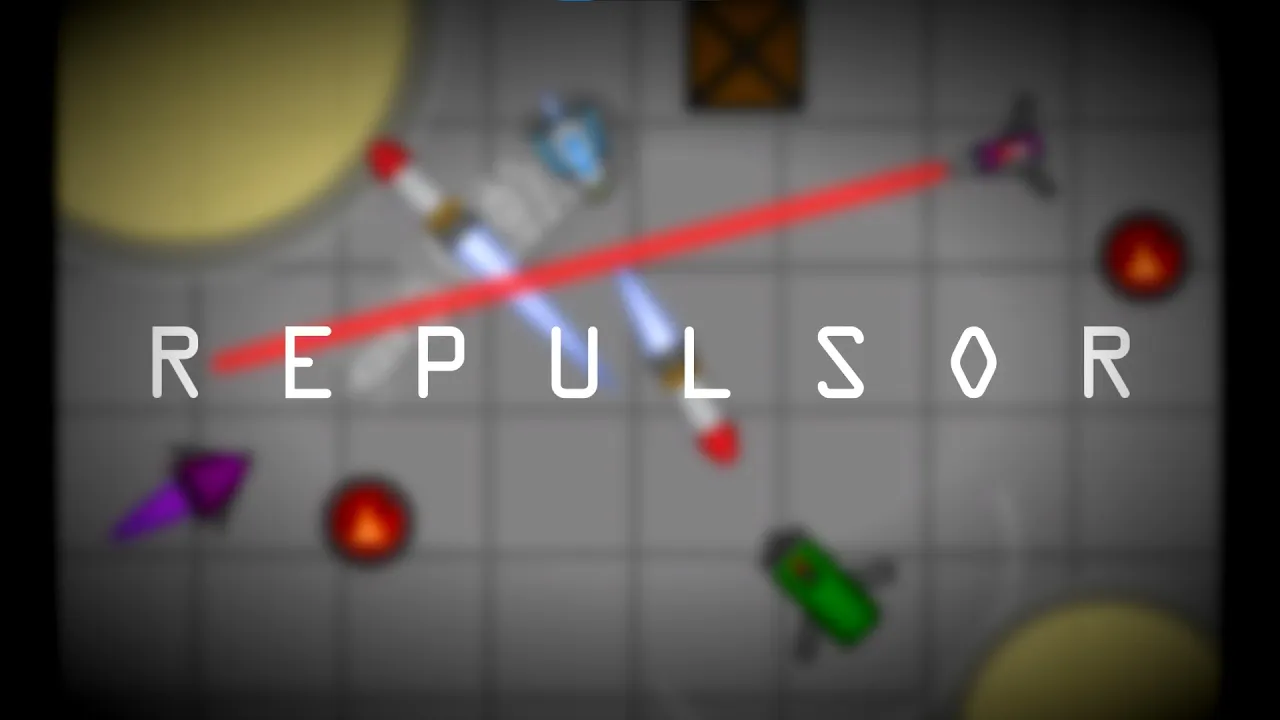
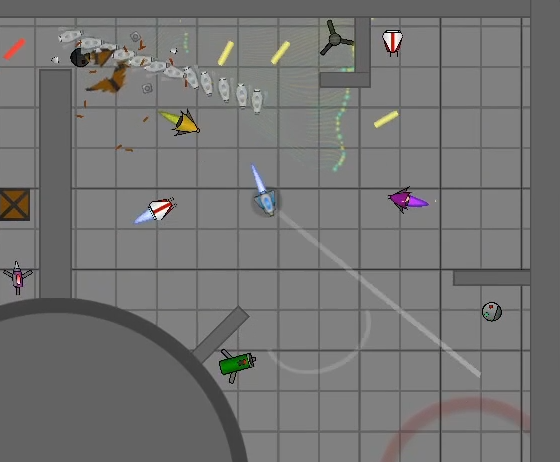
Things get crazy in later levels with a high density of
dangerous enemies. All enemy types are seen in the above
image of level 29 "Cold Fusion".
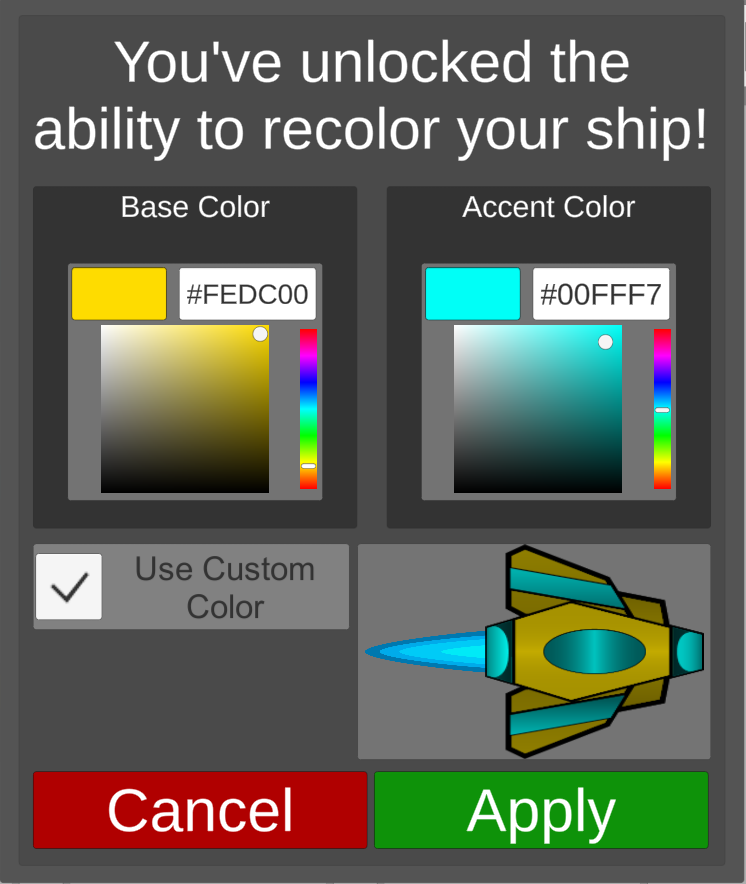
In response to a request from a beta-tester, a small
character customizer was implemented, allowing two-tone
color control.
For my first publicly released game, Repulsor, I challenged myself to build a
larger game in a short, focused time period by making use of strong up-front planning and time
management.
Repulsor is a level-based action game rapidly developed in twelve days.
High-Speed, Iterative Physics Action
Repulsor is composed of thirty, very short and frantic levels where the player can only defeat enemies
by pushing them them into hazards, or vice versa, or enemies into enemies!
Being a game heavily reliant on physics, the design leans into a very frantic style: the player is
always moving, enemies are aggressive, and projectiles fly all over the place, and everything dies in
one hit.
While Repulsor is very action-y, the extremely fast pace actually makes many gameplay scenarios too
quick to reliably react to. This interestingly has the effect of requiring the player to plan out
their route to beating a level ahead of time- eventually building up a strategy which can fully tackle
the level (However, there is a limited slow-motion slide ability to help line up tricky maneuvers).
Persistent Data
This was my first project which made extensive use of persistent data. Levels needed to track high
scores and the number of points earned per level, as the cumulative point count is used for unlocking
more levels.
To store this persistent data, I coded an entire system for serializing level completion data,
settings, unlocks, and customization. As an added piece, I also figured out how to make beta save
files backwards compatible!





